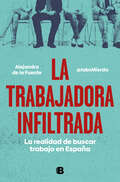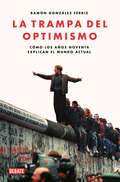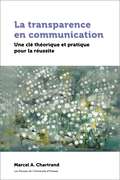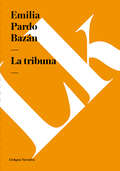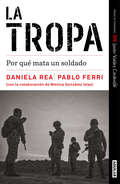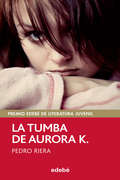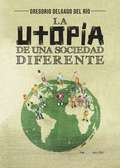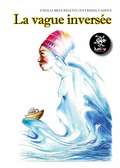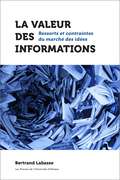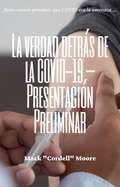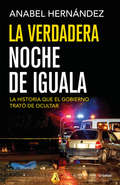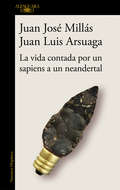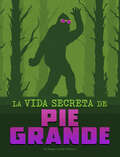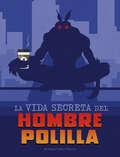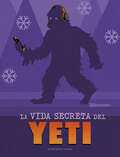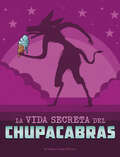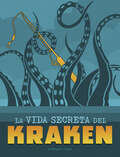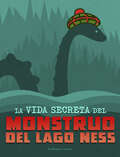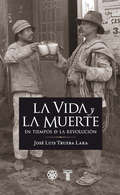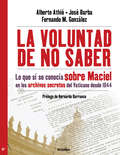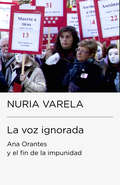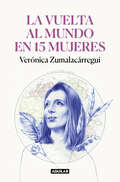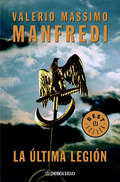- Table View
- List View
La trabajadora infiltrada: La realidad de buscar trabajo en España
by Alejandra de la Fuente (Mierda Jobs)Un libro imprescindible para entender los abusos y la precariedad del mundo laboral de la mano de la creadora de la plataforma Mierda Jobs. ¿Hasta dónde llega la precariedad laboral en España? ¿Qué información se oculta en una oferta de trabajo? ¿Cuáles son las tácticas que un empleador usa en una entrevista cuando ofrece un empleo abusivo? ¿Existe realmente la discriminación de género en las ofertas que se publican? ¿Cómo se puede distinguir un buen trabajo de uno precario? Contratos inexistentes, falsos autónomos, horas extras no retribuidas, fraudes laborales, salarios miserables... La precariedad laboral en España es una realidad y un problema estructural que afecta con especial dureza a las mujeres y a las personas jóvenes. En este libro Alejandra de la Fuente, periodista y creadora de la plataforma Mierda Jobs, bucea en el peligroso mar de los anuncios de trabajo e investigando las ofertas laborales de once puestos -teleoperadora, camarera, niñera, dependienta, peluquera, limpiadora...- para desvelar, desde dentro, hasta dónde pueden llegar los abusos laborales en nuestro país.
La trampa del optimismo: Cómo los años noventa explican el mundo actual
by Ramón González FérrizUna crónica sobre los noventa, una década trascendental para entender el mundo de hoy. En España, Europa y Estados Unidos, la década de 1990 estuvo dominada por un optimismo sin precedentes. Caído el Muro de Berlín, parecía que el capitalismo se había quedado sin rivales, que internet crearía formas de comunicación totalmente libres, que se había dado con la fórmula económica que permitiría una prosperidad constante, que la globalización no solo iba a ser beneficiosa para la economía mundial sino para la difusión de la democracia, y que la llamada tercera vía superaría la división entre izquierda y derecha. Pero si echamos la vista atrás, el legado de esa década es mucho más sombrío. En España los noventa también supusieron el inicio de la burbuja inmobiliaria que estallaría en 2008 y en Estados Unidos se desarrollaron los productos financieros que provocarían la catástrofe de Lehman Brothers y precipitarían a Europa y al mundo a la peor recesión económica desde el crack de 1929. En paralelo, los cimientos del euro, desarrollados también en esa década, demostraron ser más inestables de lo imaginado, y los trabajadores industriales de los países ricos se convirtieron en víctimas de esa globalización tan celebrada. Combinando la crónica de algunos de los acontecimientos de la época y el ensayo reflexivo, Ramón González Férriz repasa las consecuencias de una década fulgurante protagonizada por Felipe González y José María Aznar, Bill Clinton y Tony Blair, Helmut Kohl y François Mitterrand, pero también por la música indie, el Britpop, la serie Friends y la aparición de Hotmail, Google y Amazon.
La transparence en communication: Une clé théorique et pratique pour la réussite (Praxis)
by Marcel A. ChartrandCet ouvrage répond aux besoins de l’enseignant qui cherche des exemples concrets pour illustrer les théories, concepts et nouvelles pratiques de la communication organisationnelle. L’analyse fine de 79 cas pertinents montre clairement la créativité du relationniste en action. À l’ère de l’information continue, le moindre soubresaut sur la planète est susceptible d’être retransmis dans les secondes qui suivent au moyen d’un appareil électronique – images et textes compris. L’évolution accélérée des technologies transforme les professions, en particulier celle de relationniste. La transparence en communication présente les théories et les concepts qui sous-tendent les principes de la communication exemplaire en relations publiques, et montre qu’une approche créative conduit à des pratiques innovantes. Le corpus de données porte sur une sélection d’études de 79 cas réels qui illustrent la créativité du relationniste à l’œuvre. Il tient compte du nouveau lieu d’action du communicateur, du contexte médiatique et de l’horizontalité des communications actuelles. Une référence incontournable pour les praticiens comme les théoriciens, les futurs relationnistes, les chefs d’entreprise et les gestionnaires porte-parole de leur société ou organisme. Publié en français
La trastienda de Trump
by Daniel Estulin¿Quién está detrás de Donald Trump? Desde el inicio de su carrera presidencial, Donald Trump, con un discurso en extremo xenófobo y antisistema, logró sortear todos los obstáculos hasta ser elegido presidente de la mayor democracia del orbe. ¿Cómo es posible que este individuo demencial haya conseguido tal hazaña? ¿Quién lo apoyó para llegar a la Casa Blanca? ¿Qué cambios geopolíticos le esperan al mundo? Daniel Estulin, haciendo uso de sus conocimientos de exespía ruso y disponiendo de información de primera mano, nos ofrece en este libro una crónica apasionante en la que revela pormenores, personajes, intereses políticos y empresariales que están detrás de la llegada de Trump al poder. Las fisuras entre demócratas y republicanos, el nuevo orden mundial, el negocio multimillonario de la droga, las conexiones con Rusia, el papel de las agencias de inteligencia, la orquestación de distintos gobiernos son algunos de los temas que esta rigurosa investigación trae a cuenta para entender todo lo que implica que Donald Trump sea el presidente de la nación más poderosa de la historia moderna. Así, quien lea estas páginas, sabrá que todo está encaminado hacia una transformación radical, de la cual Trump es apenas la punta del iceberg.
La tribuna
by Emilia Pardo BazánIn this novel are seen the political ideas of the writer through their/her characters. The laborer, as social layers appear her for the first time from the perspective of the Spanish novel. The crisis marked by the Revolution of 1868, the emancipation of the working woman and the labor demands of the incipient proletariat constitutes the spiritual atmosphere that involves the narrative world of this work.En esta novela se ven las ideas políticas de la escritora a través de sus personajes. El obrero, como capa social aparece aquí por primera vez en el panorama novelístico español. La crisis marcada por la Revolución de 1868, la emancipación de la mujer trabajadora y las reivindicaciones laborales del incipiente proletariado constituyen la atmósfera espiritual que envuelve el mundo narrativo de esta obra.
La tropa: Por qué mata un soldado (Premio de periodismo Javier Valdez Cárdenas #Volumen 20)
by Daniela Rea Pablo FerriDesde que el Ejército asumió el papel de la policía, una persona muere cada día a manos de militares en México. ¿Qué hay detrás de esas muertes? En estas páginas se encuentran respuestas que revelan un rostro terrible, fracturado, sangriento y al mismo tiempo conmovedor. Un soldado mata y una parte del Estado se rompe. Algo que no debería ocurrir de repente sucede. Camuflados como policías, los militares mexicanos patrullan al borde del precipicio. Entrenados para la guerra, la batalla contra los enemigos plantea una ecuación irresoluble. En poco más de una década, el ombudsman mexicano ha recibido más de 11 000 quejas por presuntas violaciones a derechos humanos cometidas por militares. Denuncias por asesinato, tortura, desaparición forzada. ¿Por qué mata un soldado? ¿Por qué alguien que jura proteger a las personas usa la fuerza del Estado para atacarlas? Los autores de este libro frontal, riguroso en su investigación, no por ello menos humano y con pasajes conmovedores, quisieron entender el motivo, saber en qué circunstancias se dan estos horrores. Para develar las verdades expuestas en estas páginas eligieron a los soldados. ¿Quiénes son? ¿Cuáles son sus historias? ¿Cómo han sido entrenados? ¿En qué momento y por qué asesinan, torturan, desaparecen? Hace tres años Pablo Ferri y Daniela Rea iniciaron un viaje para buscar respuesta a estas preguntas, travesía que los llevó a la cárcel militar de Ciudad de México, a un consejo de guerra en Veracruz, a patrullar con soldados junto al río Bravo... estas páginas intentan ofrecer las respuestas a estos cuestionamientos inquietantes. Con la colaboración de Mónica González Islas.
La tumba de Aurora K. (Periscopio #107)
by Pedro Riera de Habsburgo-LorenaHabíamos viajado hasta el pequeño pueblo de Clayton para que mi padre tomara las muestras de ADN y averiguara si aquella mujer, Aurora K., era la ?madre de mi padre?. La biológica. Y remarco lo de la ?madre de mi padre? porque, para mí, aquella mujer nunca sería mi abuela. Mi abuela era la otra, la de toda la vida, la que montaba multitudinarias partidas de cartas con mis primos, la que me hacía empanadillas de pollo para mi cumpleaños, la que nos contaba aquellas asombrosas historias sobre la vida en Turenia antes de la guerra? Y ninguna prueba de ADN iba a cambiar eso. No me importaba que su sangre no corriera por mis venas, ni la del abuelo, ni la de mis primos. Ellos eran mi familia. Yo era y sería siempre una Pekar. Pero me temo que me estoy liando? Mi padre no se cansa de repetirme que las historias hay que explicarlas desde el principio. Y esta historia es demasiado extraordinaria, así que la empezaré de nuevo. Desde el principio?
La utopía de una sociedad diferente
by Gregorio Delgado del RíoLa utopía (razón y sentimiento) de hacer realidad una sociedad diferente no busca adhesiones, busca ser el pretexto para la reflexión de cada uno. <P><P> El lector tiene ante sí una sencilla obra de opinión. Está integrada por una serie de reflexiones aparecidas, casi en su totalidad, en medios de comunicación social. La utopía (razón y sentimiento) de hacer realidad una sociedad diferente. No se buscan adhesiones, sino la reflexión al filo de la mía propia. <P>Las reflexiones que tienes en las manos son muy elementales, pero te pueden ayudar a pensar, a dudar, a inquietarte o perturbarte. Siempre buscan el que te atrevas a ser tú mismo. No dejes en manos de otro, de nadie, de ningún partido político, ni de ninguna confesión religiosa, tu concepción de la libertad y de la justicia. <P>La garantía de esta libertad individual es esencial para construir el futuro. Se ha de conquistar cada día. <P>Nadie la regala.
La vague inversée
by Patrizia CaiffaC’est l’époque de la crise économique et de l’emploi en Italie. Valeria, une jeune méridionale, aspirante journaliste insatisfaite et Pino, camionneur lombard qui vient de perdre son emploi, et a sa femme et ses enfants à charge, décident de donner un tournant à leur difficile existence au moyen d’un geste impensable: tenter le “voyage de l’espoir” des migrants en Méditerranée en sens inverse. De Lampedusa en Tunisie. Dans le bateau, une quinzaine d’Italiens se retrouvent ensemble, de tous les ȃges et les milieux sociaux, de différentes régions, qui racontent leurs vie set les problèmes qui les ont poussés à partir. Ce sont les premiers Italiens qui voyagent en sens inverse. Essayant justement de chevaucher la vague inversée.
La valeur des informations: Ressorts et contraintes du marché des idées
by Bertrand LabasseDans le chaos de la communication moderne, comment et pourquoi un message réussit-il à plaire? Par l’analyse méthodique des connaissances scientifiques disponibles, cet ouvrage explore les logiques de production et de réception des discours. Pourquoi les messages qui nous plaisent nous plaisent-ils ? Derrière cette question simple se cache l’un des plus vieux problèmes théoriques de la communication, mais aussi l’un des plus importants dans le bouillonnement contemporain des contenus culturels, politiques, médiatiques et distractifs.Cette recherche s’attaque à ce défi sous un angle nouveau, au moyen d’une approche interdisciplinaire et expose de façon très stimulante les ressorts cognitifs et sociaux qui expliquent les logiques de production et de réception des multiples messages – triviaux ou érudits – en concurrence pour l’attention du public. La clarté de sa construction permettra à chacun de suivre pas à pas les étapes d’une quête captivante menée pendant plus de vingt ans sur des contextes discursifs aussi variés que le journalisme, la littérature ou la communication scientifique et médicale. Au fil d’un cheminement méthodique dont la rigueur n’exclut pas l’humour, on découvre comment des facteurs psychologiques et normatifs similaires, connus de longue date mais rarement rapprochés jusqu’à maintenant, s’exercent conjointement et comment ils contribuent globalement à façonner, pour le meilleur ou le pire, la société ultracommunicante dans laquelle nous vivons.
La verdad detrás de la COVID-19 –Presentación Preliminar
by Mack C. MooreLa verdad detrás de la COVID-19 –Presentación Preliminar de Mack C. Moore Preguntas que se han realizado acerca de la COVID-19 ¿Aprobó China una ley de vacunación antes de la pandemia? ¿Son los informes sobre la COVID-19 precisos? ¿Son seguras las vacunas? ¿Es la COVID-19 una amenaza real? Encuentre las respuestas a estas preguntas y mucho más en… La verdad detrás de la COVID-19 – Presentación preliminar. Este libro cuestiona la narrativa respecto de los informes existentes sobre la pandemia. Además, elimina los miedos y las preocupaciones que tenemos acerca de la COVID. Expondrá la verdad detrás de la pandemia de la COVID-19. Sin embargo, se trata de la presentación preliminar de una versión más detallada y explosiva ¡que saldrá a la luz a finales de 2021! ¡Descubra qué nos han estado ocultando!
La verdadera noche de Iguala: La historia que el gobierno trató de ocultar
by Anabel HernándezAnte acontecimientos como el del 26 de septiembre de 2014, ningún país puede seguir adelante sin conocer la verdad a la que tienen derecho las víctimas y la sociedad.Los hechos de Iguala nos obligan a reflexionar sobre el momento que vive México: retratan con crudeza la degradación de las instituciones cuya obligación es procurar justicia y protegernos; al mismo tiempo nos retratan como sociedad, muestran cuáles son nuestros temores más profundos, pero también nuestras esperanzas. En medio de la polarización y la soledad que se vive en un país como México, la gente ha comenzado a olvidar que el dolor que la injusticia provoca a los otros debiera ser nuestro propio dolor.En esta investigación el lector recorrerá el laberinto del caso, sus trampas, su oscuridad y la luz. Llegará a la calle Juan N. Álvarez, verá los casquillos y las sandalias tiradas en el suelo. Entrará en la Normal Rural "Raúl Isidro Burgos", escuchará las intensas voces de sus estudiantes, algunas veces llenas de valor y orgullo, otras de miedo y soledad. Viajará a los sórdidos lugares donde se aplicaron infames torturas para fabricar culpables, así como a las oficinas de altos funcionarios donde se ejecutó el encubrimiento. Asimismo, conocerá de viva voz los testimonios de aquellos que recibieron jugosas ofertas de dinero para que se culparan y culparan a otros, y así cerrar el incómodo caso. Finalmente, vislumbrará en las voces de los testigos la desesperación de las víctimas durante las horas del exterminio, el coraje de los sobrevivientes y las lágrimas de los que fueron desaparecidos. -Anabel Hernández-
La vida contada por un sapiens a un neandertal
by Juan José Millás Juan Luis ArsuagaEl ingenio de Millás y la sabiduría de Arsuaga unidos para contar la vida como la mejor de las historias. «-Tú y yo podríamos asociarnos para hablar de la vida; levantaríamos un gran relato sobre la existencia. ¿Lo hacemos? -dijo el escritor.-Lo hacemos -contestó el paleontólogo.» Hace años que el interés por entender la vida, sus orígenes y su evolución resuena en la cabeza de Juan José Millás, de manera que se dispuso a conocer, junto a uno de los mayores especialistas de este país en la materia, Juan Luis Arsuaga, por qué somos como somos y qué nos ha llevado hasta donde estamos. La sabiduría del paleontólogo se combina en este libro con el ingenio y la mirada personal y sorprendente que tiene el escritor sobre la realidad. Porque Millás es un neandertal (o eso dice), y Arsuaga, a sus ojos, un sapiens. Así, a lo largo de muchos meses, los dos visitaron distintos lugares, muchos de ellos escenarios comunes de nuestra vida cotidiana, y otros, emplazamientos únicos donde todavía se pueden ver los vestigios de lo que fuimos, del lugar del que venimos. En esas salidas, que al lector pueden recordarle a las de don Quijote y Sancho, el sapiens trató de enseñar al neandertal cómo pensar como un sapiens y, sobre todo, que la prehistoria no es cosa del pasado: las huellas de la humanidad a través de los milenios se pueden encontrar en cualquier lugar, desde una cueva o un paisaje hasta un parque infantil o una tienda de peluches. Es la vida lo que late en este libro. La mejor de las historias. Reseñas:«Millás es uno de los escritores con más verdad por centímetro cuadrado de página.»Antonio Iturbe, Qué Leer «Nos gusta que los sabios nos expliquen cosas y que se entiendan. Es lo que hace de maravilla Arsuaga.»Víctor M. Amela, La Vanguardia «Juan José Millás es dueño de un territorio fantástico de incuestionable personalidad.»J. E. Ayala-Dip, El País «Juan Luis Arsuaga ha contado ese arranque prodigioso de la vida humana con toda la fuerza de las grandes crónicas de viajes y descubrimientos, con su talento doble de narrador y de científico.»Antonio Muñoz Molina «Millás se aprovecha de la actualidad para contarnos la vida, para expresar su perplejidad, que es la nuestra, ante el discurrir del mundo. [...] Navegar por él permite viajar a nuestra imaginación.»Fernando Delgado, La Opinión «Es uno de los mayores expertos mundiales en la evolución de nuestra especie, además de un prestigioso científico y un divulgador nato.»Ixone Díaz Landaluce, ABC
La vida secreta de Pie Grande (Vidas secretas de críptidos)
by Megan Cooley PetersonHay muchas historias sobre una misteriosa criatura peluda conocida como Pie Grande. Los lectores pueden explorar la sorprendente historia detrás de este legendario críptido del bosque. There are many stories about a mysterious hairy creature known as Bigfoot. Readers can explore the surprising history behind this legendary woodland cryptid.
La vida secreta del Hombre Polilla (Vidas secretas de críptidos)
by Megan Cooley PetersonEn 1966, la gente de Virginia Occidental comenzó a contar historias sobre haber visto una misteriosa criatura alada, que se llegó a conocer como el Hombre Polilla. Los lectores pueden aprender los sorprendentes detalles que rodean a este críptido superrápido. In 1966, people in West Virginia began to tell stories about seeing a mysterious winged creature, who became known as Mothman. Readers can learn the surprising details surrounding this super-speedy cryptid.
La vida secreta del Yeti (Vidas secretas de críptidos)
by Benjamin HarperDurante miles de años, la gente ha contado historias sobre el yeti, una criatura peluda que habita en las montañas nevadas del sudeste asiático. Los lectores pueden aprender los sorprendentes detalles detrás de esta leyenda del Himalaya. For thousands of years, people have told tales of the yeti—a hairy creature who dwells in the snowy mountains of southeast Asia. Readers can learn the surprising details behind this legend of the Himalayas.
La vida secreta del chupacabras (Vidas secretas de críptidos)
by Megan Cooley PetersonLas historias del chupacabras no coinciden sobre el aspecto de la criatura, pero todas coinciden en que a esta criatura escurridiza le gusta beber la sangre de los animales de granja. Los lectores pueden explorar todos los detalles misteriosos que rodean a este legendario críptido. Stories of the chupacabra disagree about how the creature looks, but they all agree that this sneaky creature likes to drink the blood of farm animals. Readers can explore all the mysterious details surrounding this legendary cryptid.
La vida secreta del kraken (Vidas secretas de críptidos)
by Benjamin HarperLa gente ha compartido historias sobre el legendario kraken durante cientos de años. Los lectores podrán explorar la sorprendente historia detrás de este famoso monstruo marino. People have shared stories about the legendary kraken for hundreds of years. Readers can explore the surprising history behind this notorious sea monster.
La vida secreta del monstruo del lago Ness (Vidas secretas de críptidos)
by Benjamin HarperEl legendario monstruo del lago Ness fue visto por primera vez hace casi 1500 años y la criatura ha capturado la imaginación de muchos desde entonces. Los lectores pueden aprender la sorprendente historia detrás de este misterioso críptido escocés. The legendary Loch Ness Monster was first spotted almost 1,500 years ago, and the creature has captured imaginations ever since. Readers can learn the surprising history behind this mysterious Scottish cryptid.
La vida y la muerte en los tiempos de la revolución
by José Luis Trueba LaraEn esta obra, José Luis Trueba nos sumerge en el acontecer diario del pueblo durante la Revolución Mexicana. De José Luis Trueba, autor de La ciudad sin nombre. Este libro recupera al pueblo revolucionario que vio su vida transformarse desde finales del Porfiriato hasta el momento en que el presidente Ávila Camacho anunció que la Revolución había concluido. La Revolución Mexicana no fue vista por el pueblo como una gesta heroica. En aquellos años la gente vivió dos distintos momentos que transformaron su vida: una guerra donde el horror, la violencia, la locura, el saqueo y los crímenes se transformaron en hechos cotidianos; y un periodo de paz armada durante el cual la religión política de los caudillos se enfrentó a la antigua fe y trastocó la existencia de los mexicanos. Este libro recupera -gracias a las memorias, epistolarios e información periodística de aquella época- al pueblo revolucionario, a la bola,que vio su vida transformarse desde las postrimerías del Porfiriato hasta que el presidente Ávila Camacho anunció el termino de la Revolución. En sus páginas aparece un retrato fiel de lo cotidiano, del diario acontecer de esos días: el cine y el teatro; las maneras de amar y pecar; las distintas sexualidades; lo que ocurría en las carpas y los burlesques; las bodas y las infidelidades; el surgimiento del racismo; los cambios en los hogares, en la vida de los niños, los jóvenes y los adultos, provocados por una revolución con minúscula.
La vida y la muerte en los tiempos de la revolución
by José Luis Trueba LaraEn esta obra, José Luis Trueba nos sumerge en el acontecer diario del pueblo durante la Revolución Mexicana. De José Luis Trueba, autor de La ciudad sin nombre. Este libro recupera al pueblo revolucionario que vio su vida transformarse desde finales del Porfiriato hasta el momento en que el presidente Ávila Camacho anunció que la Revolución había concluido. La Revolución Mexicana no fue vista por el pueblo como una gesta heroica. En aquellos años la gente vivió dos distintos momentos que transformaron su vida: una guerra donde el horror, la violencia, la locura, el saqueo y los crímenes se transformaron en hechos cotidianos; y un periodo de paz armada durante el cual la religión política de los caudillos se enfrentó a la antigua fe y trastocó la existencia de los mexicanos. Este libro recupera -gracias a las memorias, epistolarios e información periodística de aquella época- al pueblo revolucionario, a la bola,que vio su vida transformarse desde las postrimerías del Porfiriato hasta que el presidente Ávila Camacho anunció el termino de la Revolución. En sus páginas aparece un retrato fiel de lo cotidiano, del diario acontecer de esos días: el cine y el teatro; las maneras de amar y pecar; las distintas sexualidades; lo que ocurría en las carpas y los burlesques; las bodas y las infidelidades; el surgimiento del racismo; los cambios en los hogares, en la vida de los niños, los jóvenes y los adultos, provocados por una revolución con minúscula.
La voluntad de no saber: Lo que sí se conocía sobre Maciel en los archivos secretos del Vaticano desde 19
by José Barba Alberto Athié Fernando M. GonzálezPublicado en el contexto de la visita de Benedicto XVI a México, este libro revela el archivo de documentos secretos del Vaticano sobre el caso Maciel, demostrando con ello que, desde hace más de 60 años, las máximas autoridades de la Iglesia católica conocían la conducta criminal del fundador de los Legionarios Descubra los documentos sobre Maciel que El vaticano había mantenido en secreto hasta hoy . "Lamentablemente llegamos con mucha lentitud y atraso a estas cuestiones. De alguna manera estaban ocultas y sólo desde el año 2000 contamos con asideros concretos al respecto" aseguró Benedicto XVI al periodista alemán Peter Seewald en 2010. En contraste, este libro representa un paso decisivo para evidenciar que el papa no habla con la verdad al referirse al "caso Maciel". Joseph Ratzinger presidió la Congregación para la Doctrina de la Fe durante veinticuatro años. Por la naturaleza de su cargo, debió conocer los expedientes, publicados aquí por primera vez, donde se registraban la drogadicción y la pederastia del fundador de la Legión de Cristo. Desde la década de 1940 existía información suficiente para que las autoridades eclesiásticas procedieran contra Maciel. Sin embargo, el sacerdote michoacano obtuvo la protección y el silencio cómplice de la curia romana durante más de medio siglo. A la luz de esas consideraciones, la presente obra pone de relieve la aguda crisis del catolicismo originada por la pederastia clerical y cuestiona duramente la acelerada beatificación de Juan Pablo II, quien alguna vez llegó a calificar al líder de los Legionarios como una "guía eficaz de la juventud". Que el lector juzgue por sí mismo.
La voz ignorada (Colección Endebate #Volumen)
by Nuria VarelaLa historia de Ana Orantes, el caso que cambió para siempre la percepción de la violencia de género en España. El 4 de diciembre de 1997 Ana Orantes, una mujer humilde de un pueblo granadino, denunció en un programa de Canal Sur los cuarenta años de maltrato que había padecido a manos de su marido. Dos semanas más tarde, el 17 de diciembre, moría asesinada a manos de él. Ese asesinato marcó un antes y un después en la lucha contra la violencia de género en España. Este libro pretende ser un homenaje.
La vuelta al mundo en 15 mujeres: Historias de mujeres que me han cambiado la mirada
by Verónica ZumalacárreguiLa periodista y presentadora de televisión Verónica Zumalacárregui nos presenta en este libro-reportaje quince historias de mujeres que, como ella misma dice, le han cambiado la mirada y aportan distintas opiniones y perspectivas de temas y retos sociales a los que nos enfrentamos. Un poliédrico y rico retrato de nuestros desafíos y nuestros logros. HISTORIAS DE MUJERES QUE ME HAN CAMBIADO LA MIRADA «En mis viajes a lo largo y ancho del planeta he conocido a mujeres con valores, culturas y vidas muy distintas a la mía. En lugar de convertir nuestras diferencias en una barrera, he querido ponerme en su piel para intentar ver el mundo desde sus ojos. Me han hecho cuestionarme mis ideas, para cambiarlas, reafirmarlas o, simplemente, enriquecerlas. Pero, sobre todo, me han ayudado a liberarme de prejuicios, demostrándome que no hay una sola fórmula para ser feliz, sino muchas y muy diversas, y que aquellas que podemos elegir la nuestra somos realmente afortunadas».
La última legión
by Valerio Massimo ManfrediAnno Domini 476. El Imperio romano está llegando a su fin. Dividido en dos partes y devastado por las invasiones de los bárbaros, son ya pocos los territorios donde se mantiene el dominio de aquel Estado que gobernó el mundo durante tantos siglos. Rómulo Augusto, con trece años, es el emperador de Occidente tras haber sobrevivido a la aniquilación de su familia. El general germánico Wulfila lo hace prisionero y lo lleva a la isla de Capri junto con su preceptor Ambrosino. Sin embargo, no todos se han rendido a las fuerzas bárbaras: un grupo de valientes soldados leales a Roma le rescatan e inician un viaje a través de toda Europa, huyendo de sus enemigos, hasta llegar a los confines del imperio, al territorio de los druidas, Britania, donde encontrarán un destino inesperado.
